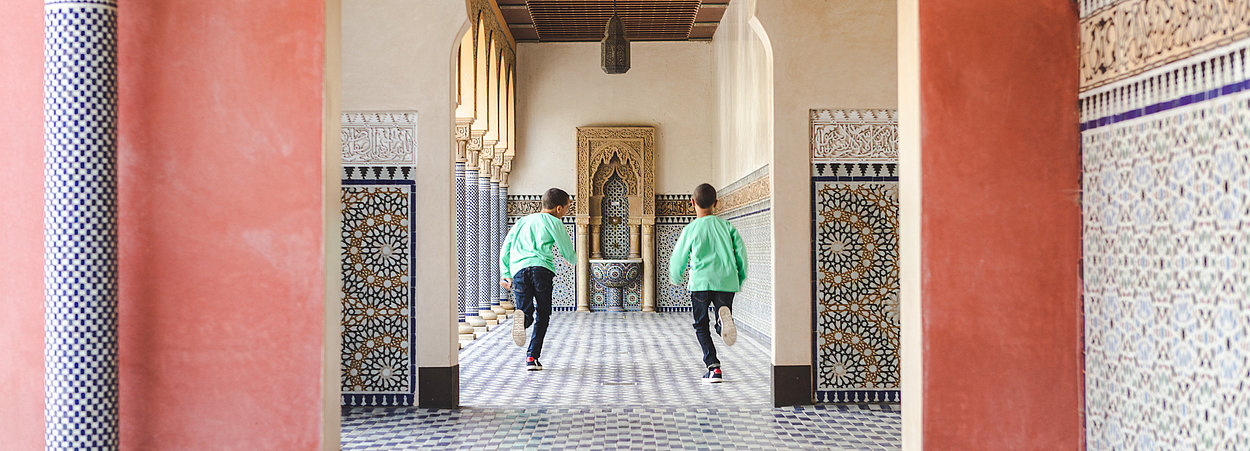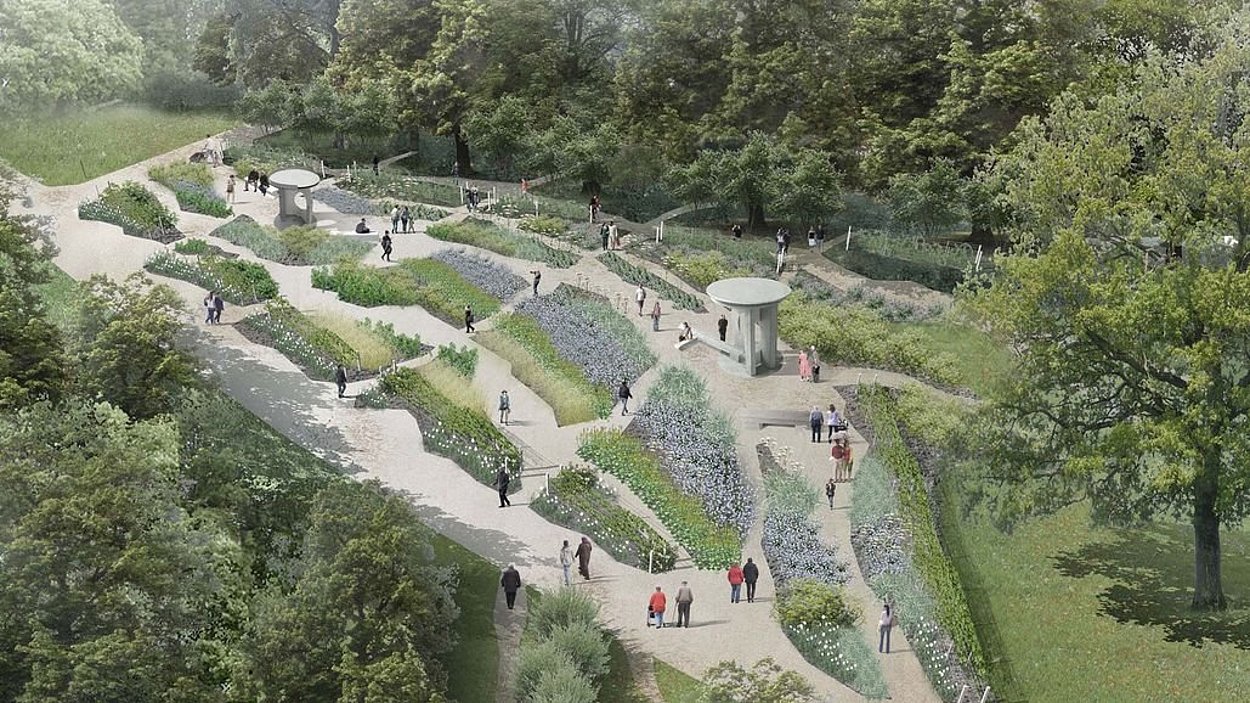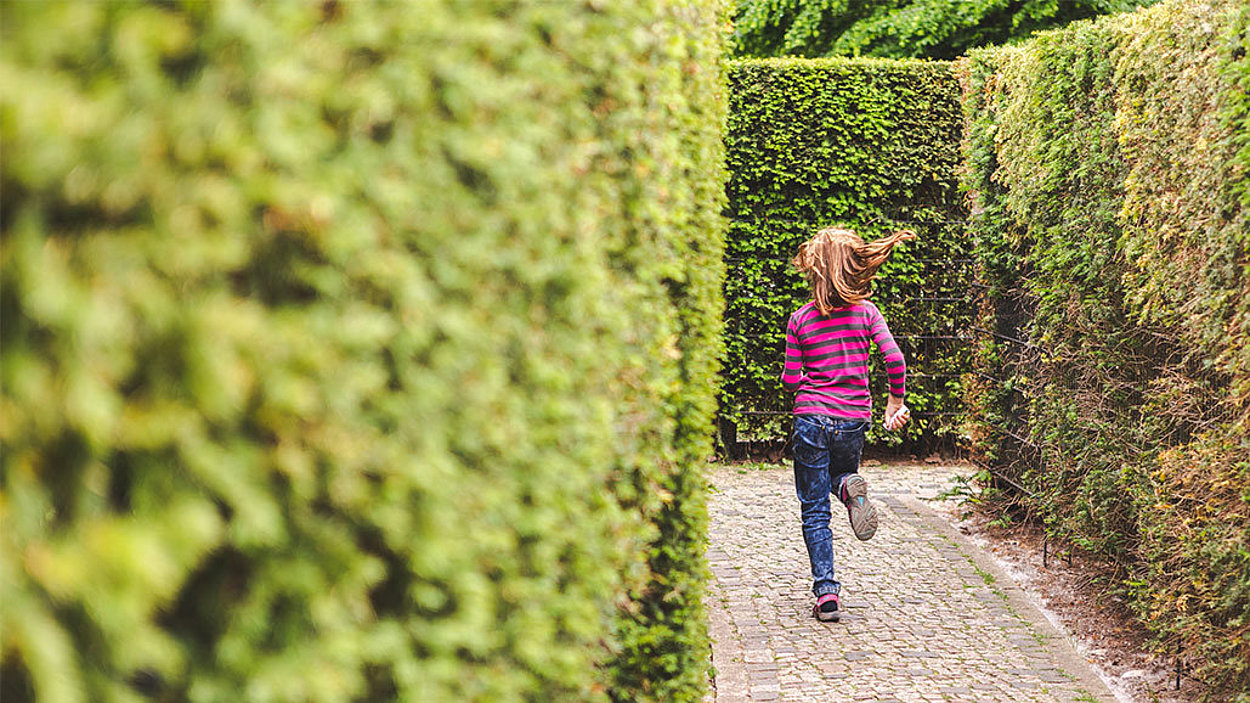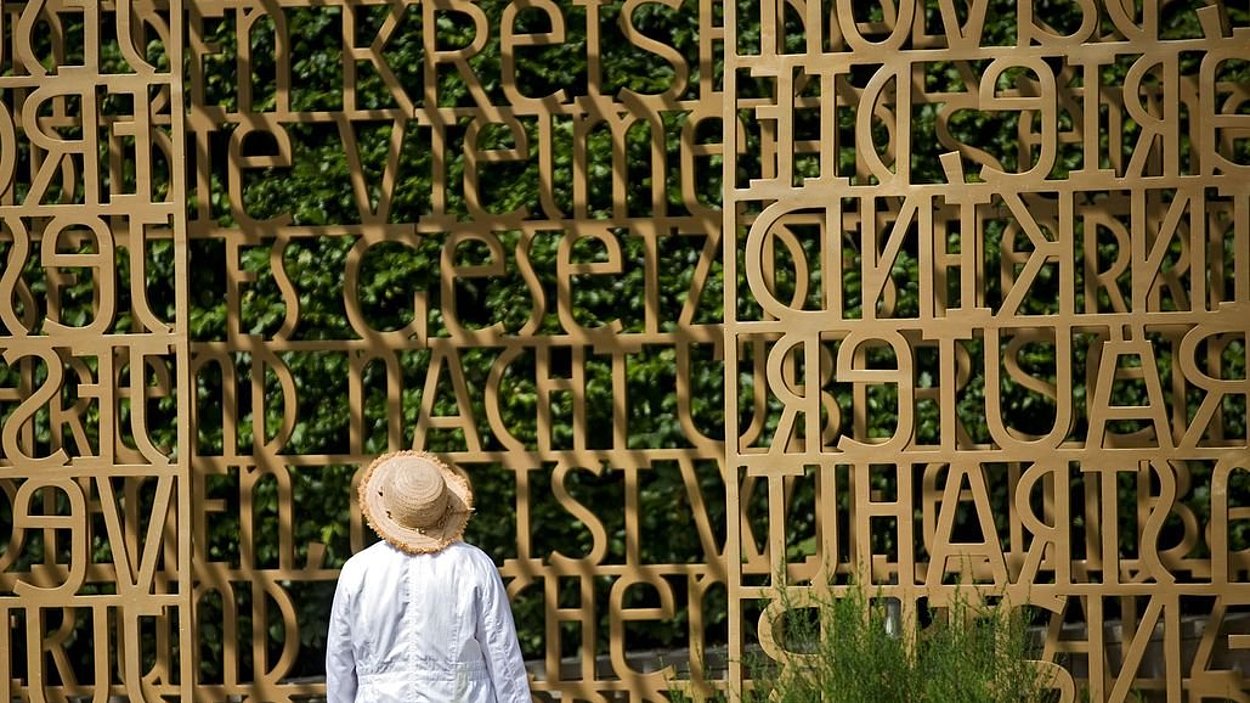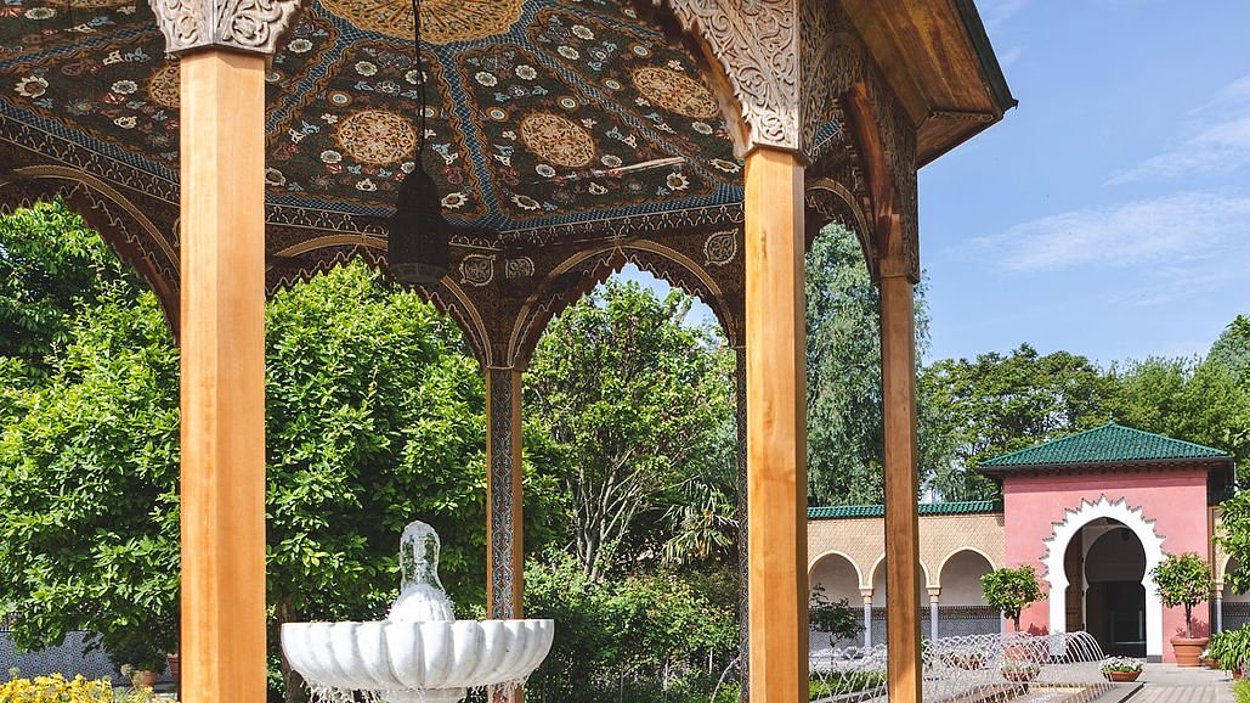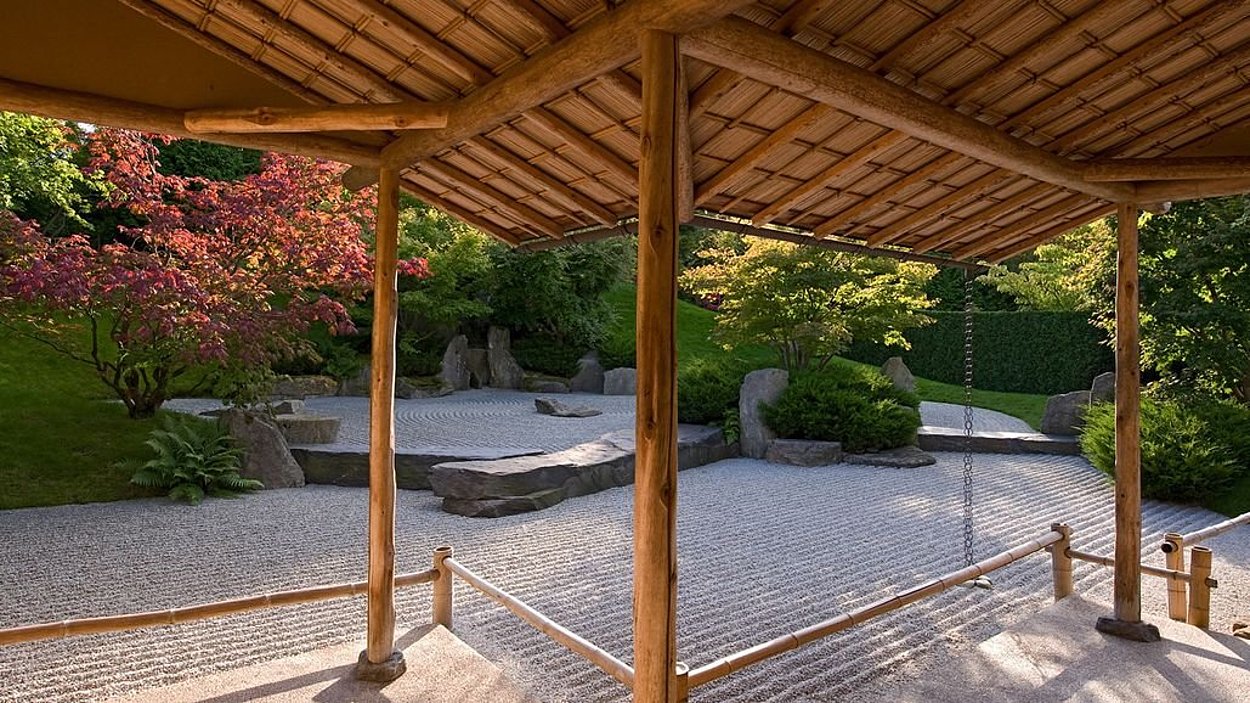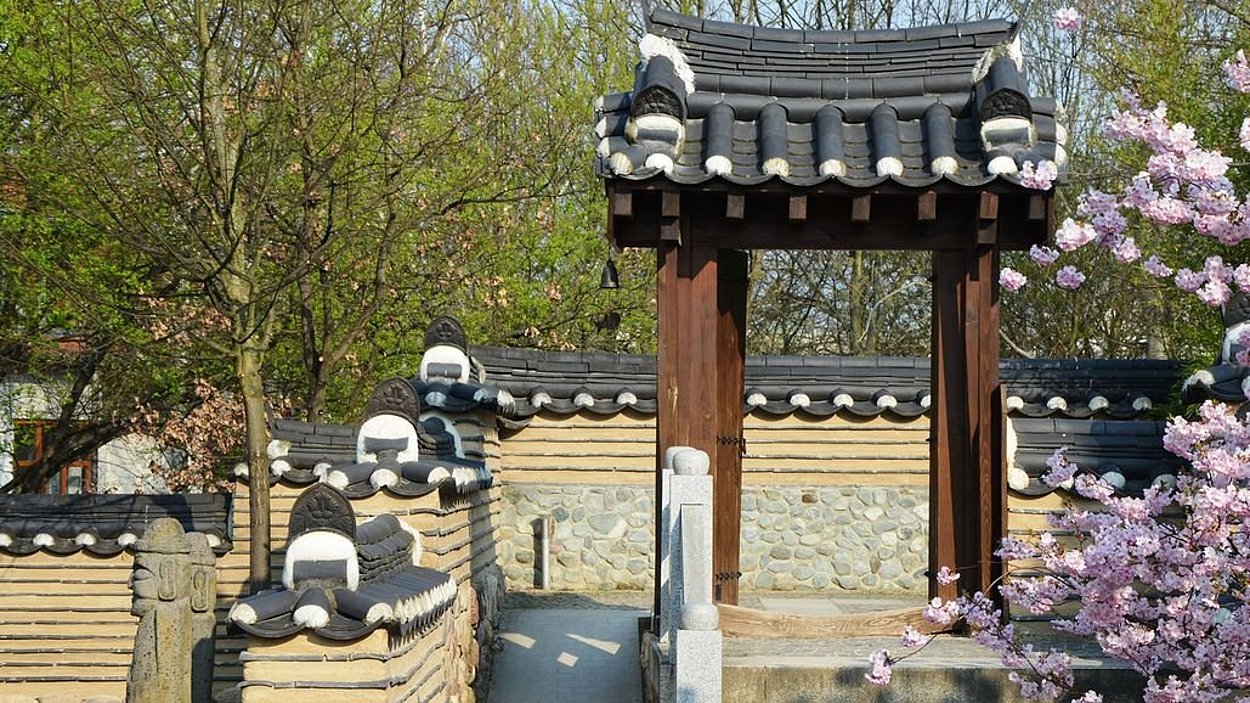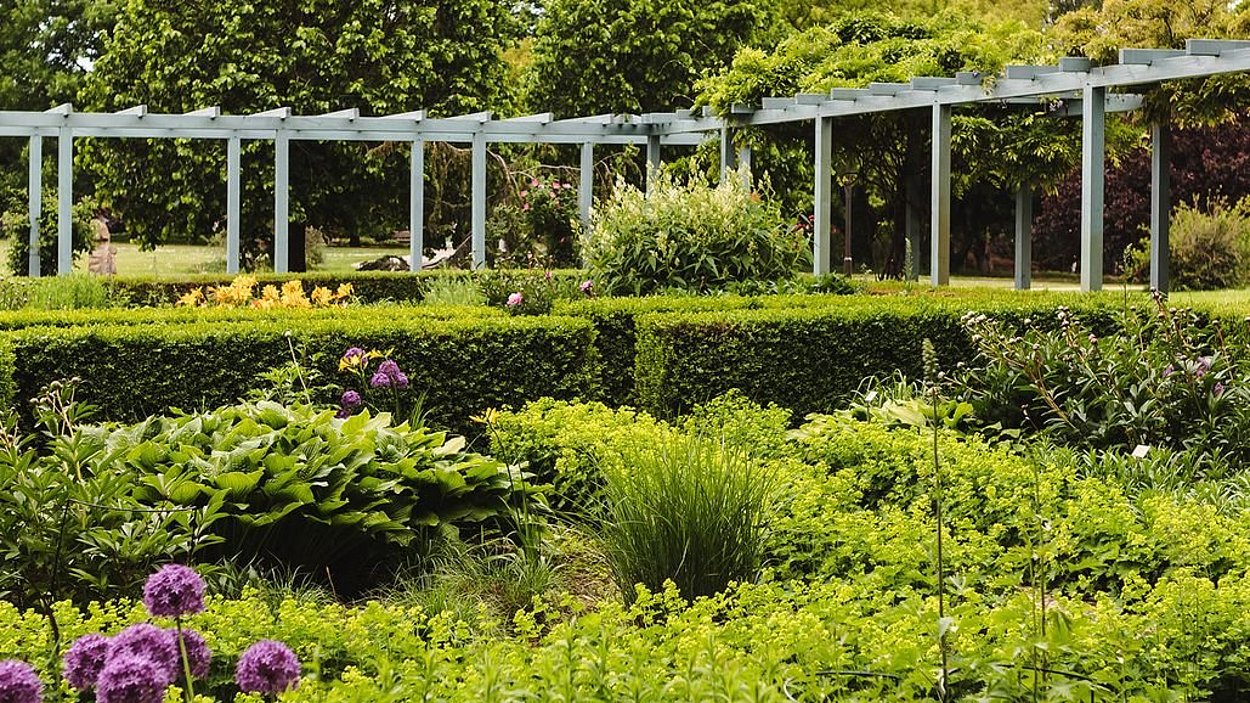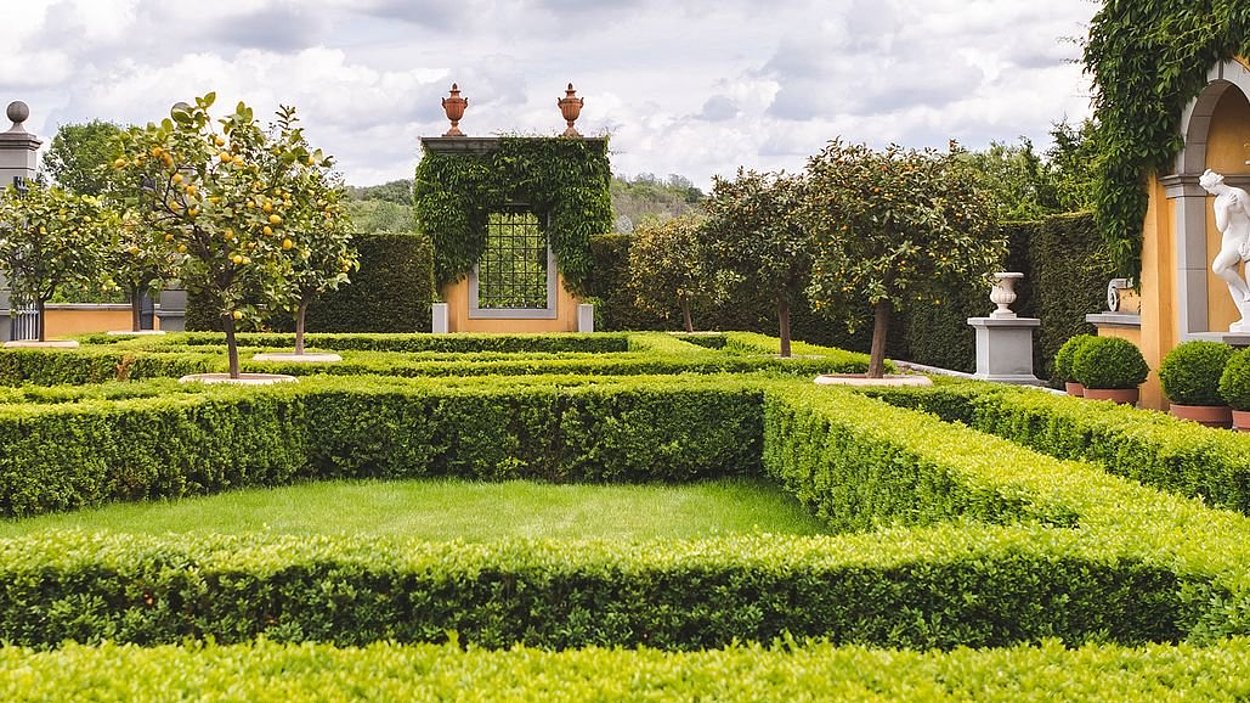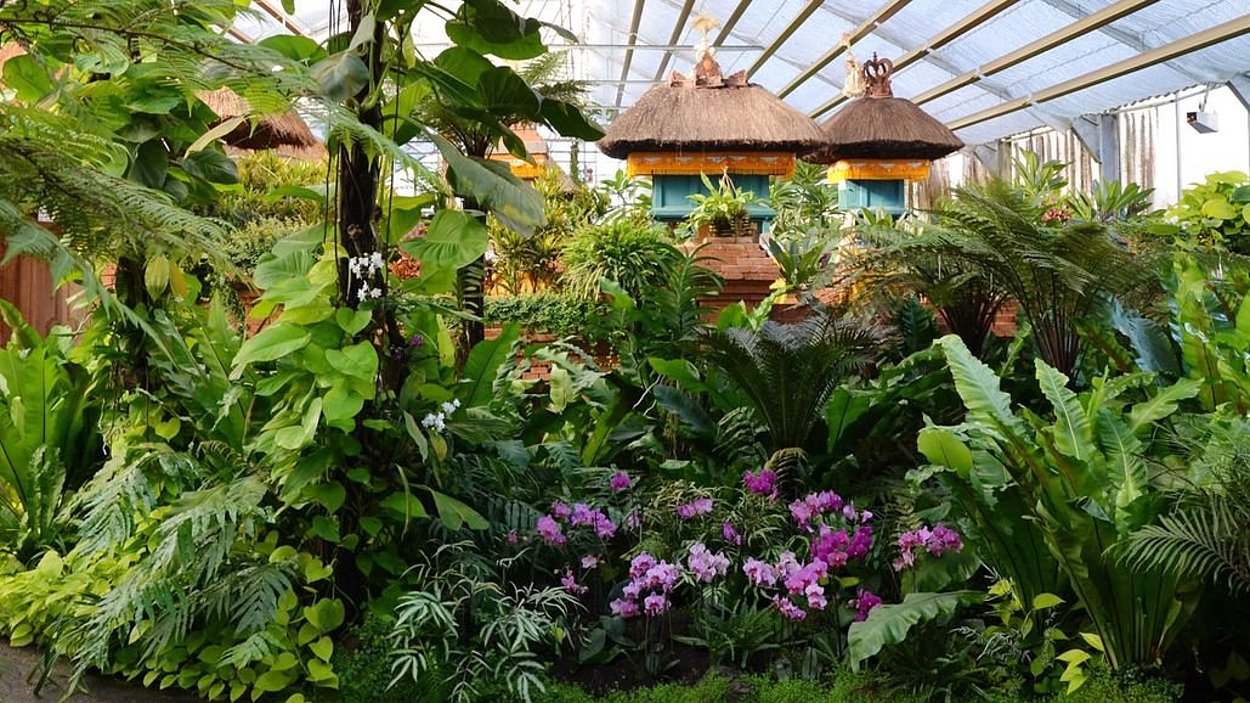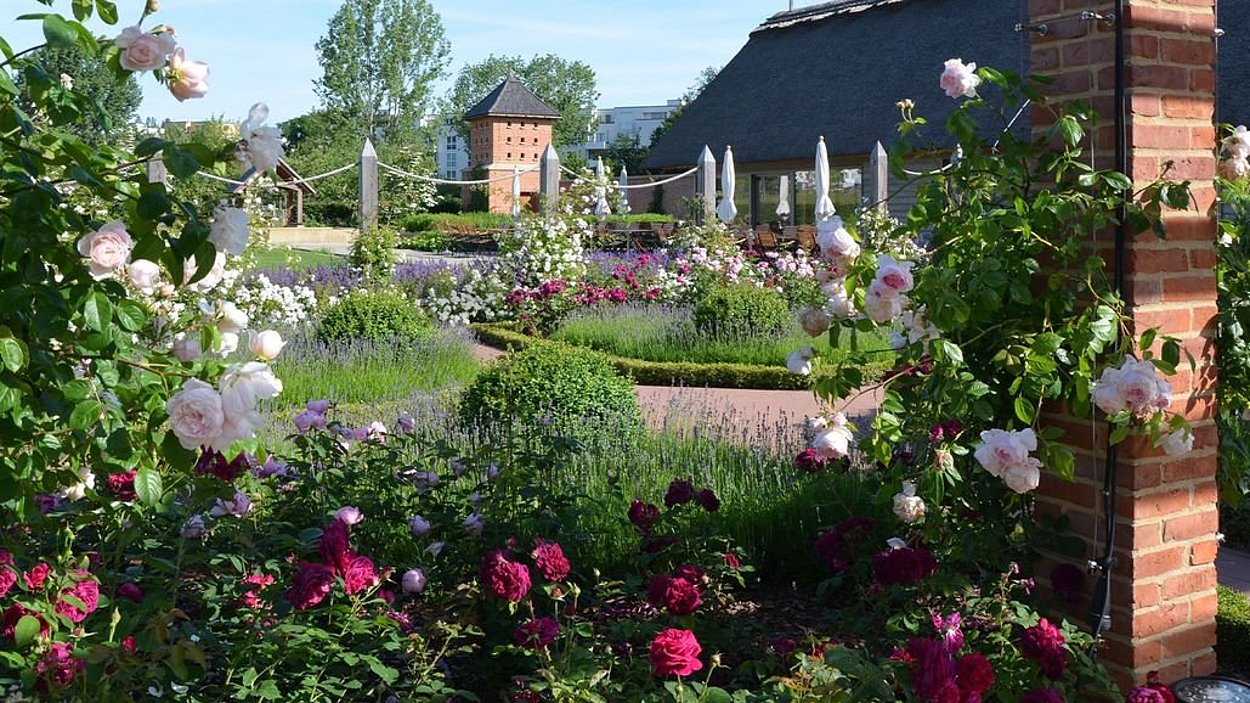Oriental-Islamic Garden
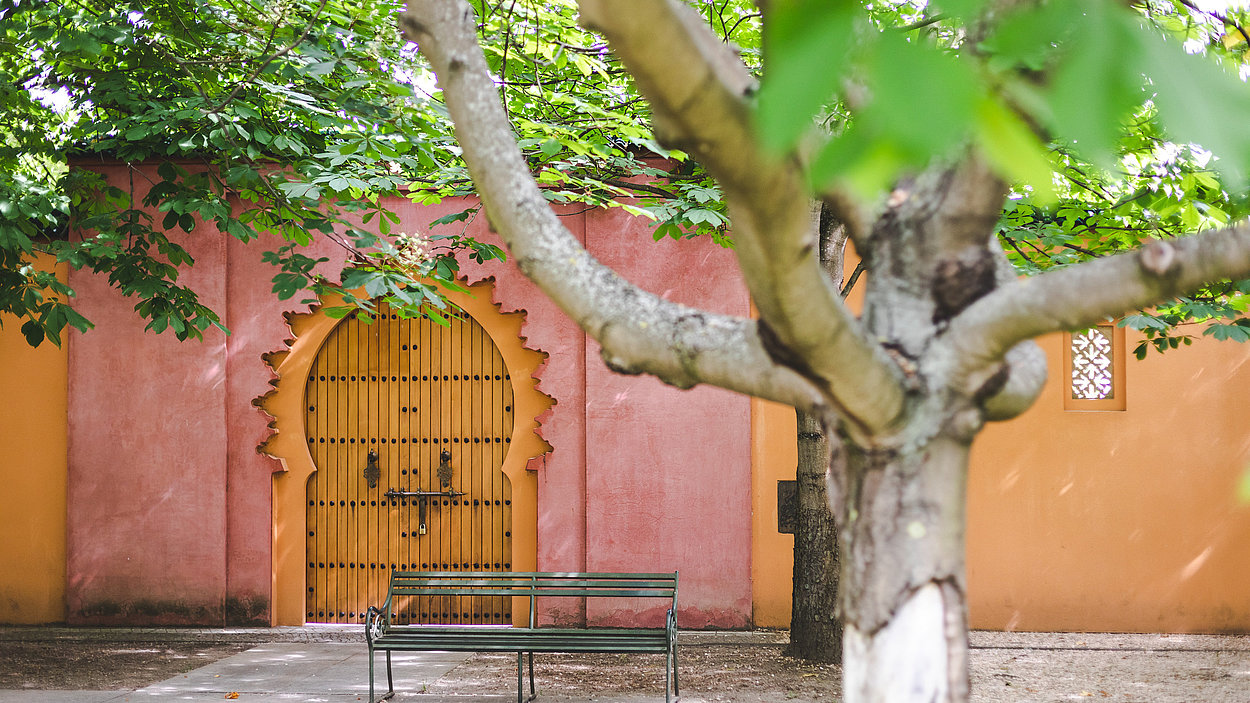
Discover Paradise on Earth
The word paradise derives from the Old Persian word "pairidaeza" and means "walled space". That's why the riad garden courtyards of the Orient are traditionally hidden behind masonry, feeding into the myth of the garden as a hidden oasis. A boundary was also necessary in order to maintain a certain climate within the gardens.
In accordance with this Islamic construction tradition, the Oriental-Islamic Garden of the Gärten der Welt is also secreted behind a four-metre-high wall, separating it from the outside world. Through the "Hall of Receptions" you enter the four-part garden courtyard with a fountain occupying the middle.
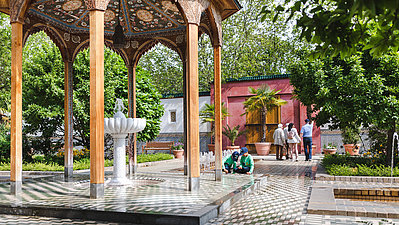
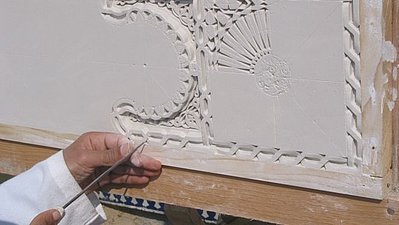
Millions of Mosaic Tiles
"Zillij" - the word for the Moroccan ceramic tiles that adorn the walls and the arcades of the garden. Since it is forbidden to depict animals or humans in oriental-islamic gardens, the ornate decoration only incorporates floral, calligraphic or geometric patterns. They have been designed by Moroccan artisans. Upon exploring the garden those with an attentive eye will spot intricately designed ornamentation almost everywhere: in the sandstone, in the plaster, in the floor covering and in the wooden decoration. A total of 1.3 million mosaic tiles were used.
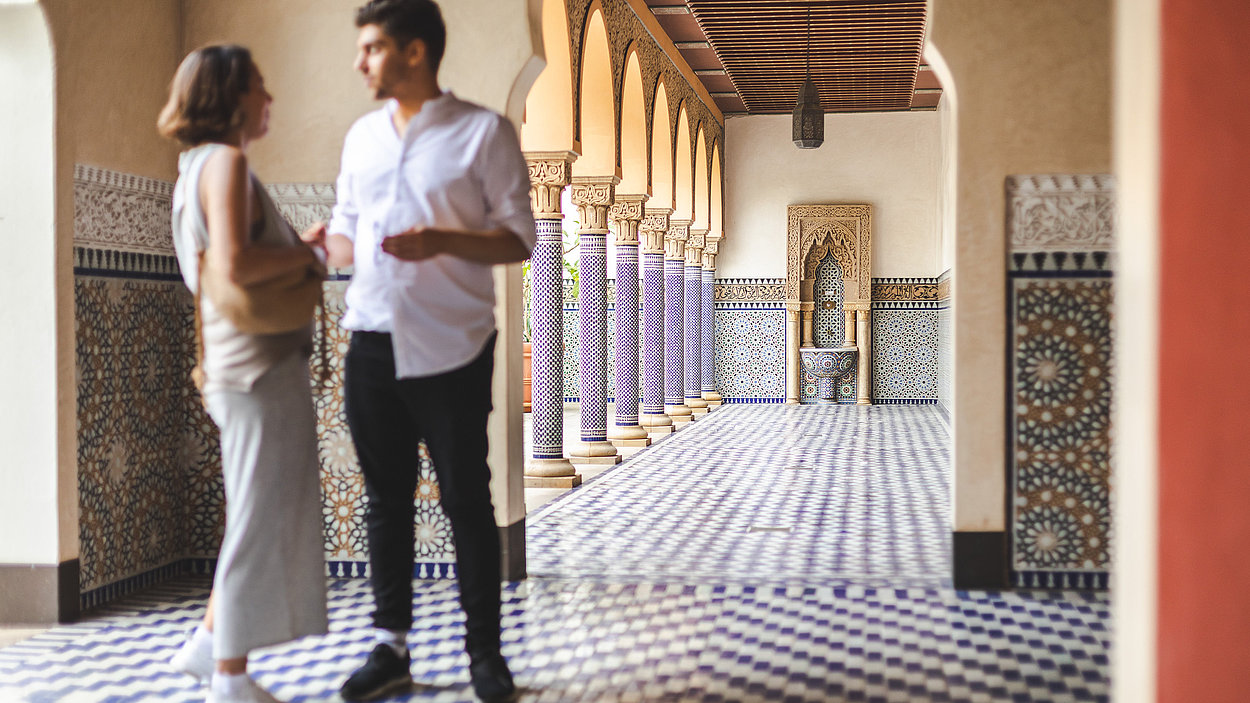
After the "Reception Hall" you pass into the 63 x 38 metre garden courtyard. In accordance with Oriental-Islamic models, it has been designed geometrically in four parts. Four ponds emerge from the large fountain bowl in the middle, around which four equally proportioned, rectangular beds have been laid. According to the Oriental-Islamic garden tradition, you will also find both ornamental and useful plants here - a combination of beauty and utility. In addition to the typical oriental pomegranates, olives and palm trees you will also find ornamental shrubs and perennials. Lilac, jasmine, oleander, geranium and large-flowered magnolias provide vivid colour and intensive fragrance during flowering. One of the garden’s botanical curiosities is the purple-pink flowering Judas tree, whose flowers bloom in spring, even before the leaves come out, directly on the wood.
The garden was opened in July 2005. It was designed by garden and landscape architect Kamel Louafi, who was assisted by Moroccan garden historian Prof. Mohammed El Fai'z. The "Reception Hall", also designed by Louafi, was added to the garden in 2007. The Oriental-Islamic Garden was made possible thanks to financial support from the Senate for Economics and Labour and the Allianz Environmental Foundation.
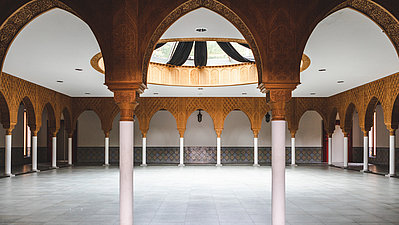
The "Reception Hall"
Permeated with a pleasant aroma of cedar wood, the light coming through the glass dome casts patterns on the intricately decorated columns and arches. You are in the "Reception Hall", where intricate design is just waiting to be discovered. Colourful tiles typical of Morocco decorate the walls, finely carved capitals above the columns support the glass-domed ceiling. The interior is enclosed by arcades. Those willing can even get married here in a civil ceremony.
